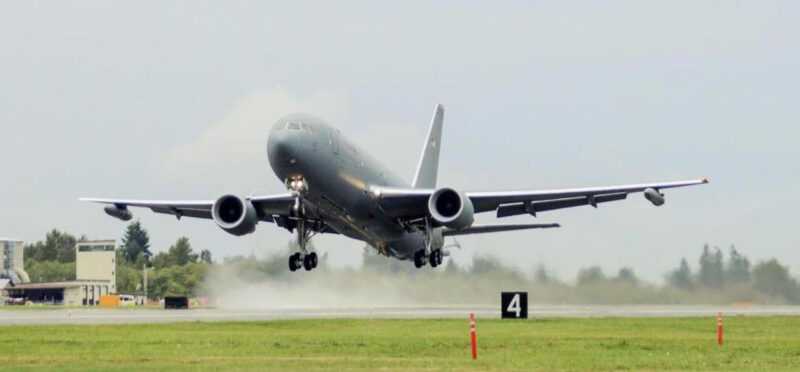USAF Seeks Next-Gen Tanker Designs While Extending KC-46 Fleet

The U.S. Air Force has issued a Request for Information (RFI) for its Next-Generation Air Refueling System (NGAS)—often referred to as KC-Z—as part of its long-term plan to modernize aerial refueling. Released on August 15, the RFI seeks industry input on future tanker airframe concepts, building on earlier rounds focused on propulsion and mission systems. The Air Force aims to field the new tanker by 2040, ensuring refueling capability in increasingly contested environments.
A Three-Phase Tanker Strategy
The RFI is part of a broader recapitalization roadmap:
- KC-X Program: Introduced the Boeing KC-46 Pegasus to replace the aging KC-135 Stratotanker.
- KC-Y “Bridge Tanker”: Initially considered as an interim solution to sustain capacity.
- NGAS/KC-Z: The future tanker, designed for advanced missions and next-generation operational requirements.
Industry Input and Timeline
This latest RFI focuses squarely on the NGAS (KC-Z) airframe design, calling on industry for innovative tanker concepts that can thrive in high-threat environments while supporting modern receiver operations. The U.S. Air Force is inviting responses by October 24, under a controlled unclassified information (CUI) designation, to encourage open yet secure problem-solving collaboration. In contrast to earlier expectations for bespoke stealth designs, the RFI now solicits a spectrum of ideas—including commercial derivatives—emphasizing flexibility and survivability in contested airspace.
Concepts like blended-wing-body layouts, unmanned capabilities, and advanced networking are explicitly encouraged. This input will shape a forthcoming Analysis of Alternatives (AoA) and pave the way to a future RFP.Extending KC-46 Production
In parallel with NGAS planning, the Air Force confirmed it will not pursue a competing interim tanker contract. Instead, the Pentagon may order up to 75 additional KC-46 Pegasus aircraft to prevent gaps in operational readiness. The KC-46, already replacing portions of the KC-135 fleet, provides a near-term bridge until NGAS reaches service.
Boeing delivered 91 KC-46 tankers by May 2025, with a total of 93 delivered to the US and Japan by July 2024. However, some deliveries were halted temporarily in March 2025 after structural cracks were discovered in new aircraft. The KC-46A was approved for global combat operations in 2022 and began full-scale operational missions in October 2024. The fleet is actively used for both aerial refueling and transport missions, including a 45-hour endurance flight in June 2024.
The Air Force is conducting environmental impact analyses to select the location for its seventh Main Operating Base (MOB 7) for the Air National Guard. The final decision is expected no later than 2027, with the first of eight aircraft scheduled for arrival in 2031.
The Road Ahead
If development stays on track, NGAS could enter service by 2040, coexisting with the KC-46 and eventually replacing the KC-135 entirely. Concepts under consideration include stealth features, optionally crewed designs, and drone-enabled refueling models.
The KC-46 production extension ensures immediate capacity while allowing the Air Force time to shape the NGAS program, balancing innovation, survivability, and long-term affordability.
Related News: https://airguide.info/?s=KC-46, https://airguide.info/category/air-travel-business/defense-military/
Sources: AirGuide Business airguide.info, bing.com, AERONAUT.media, breakingdefense.com
